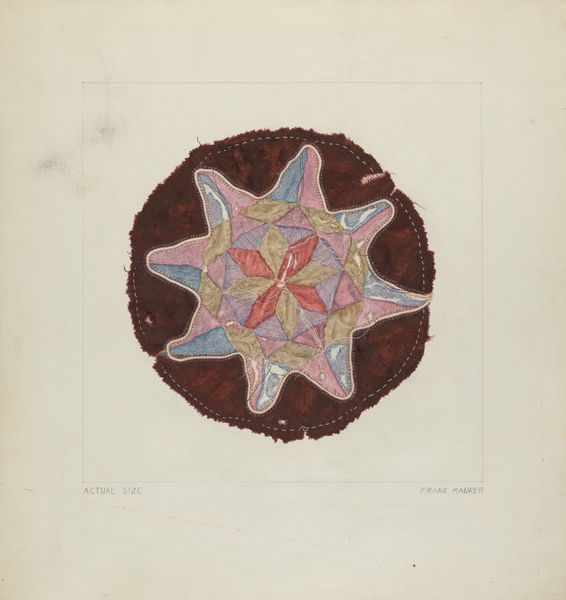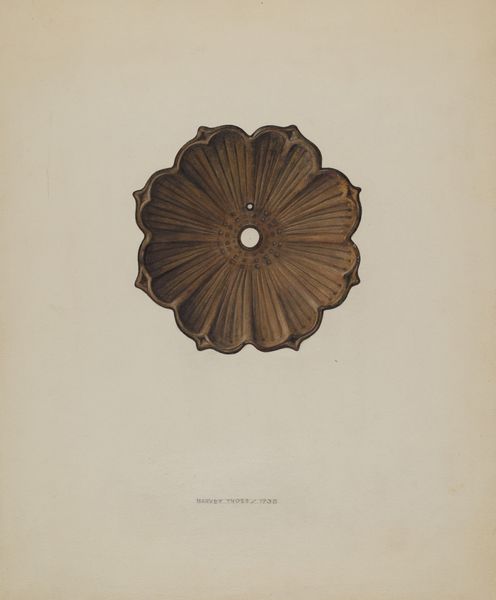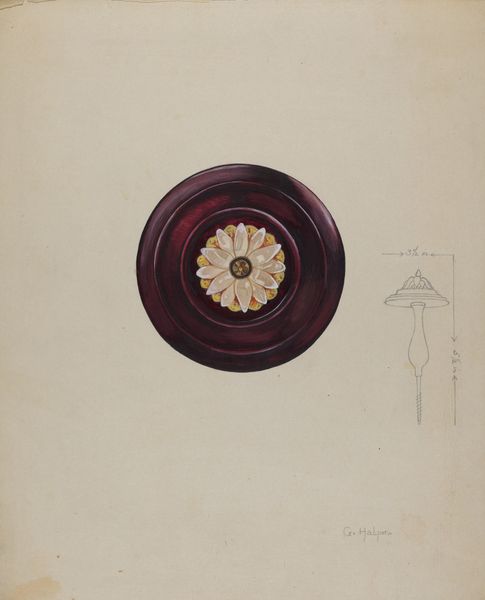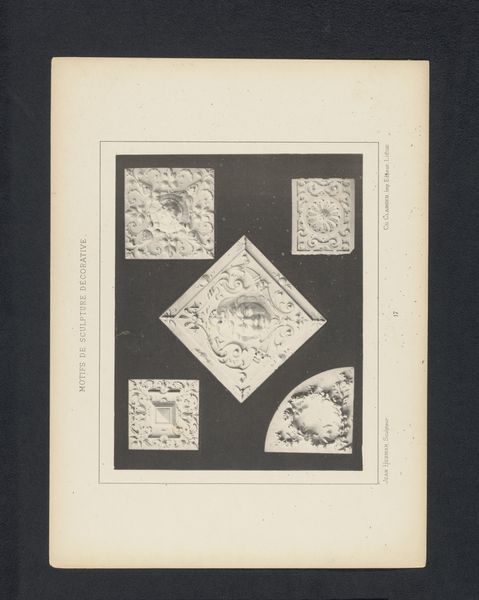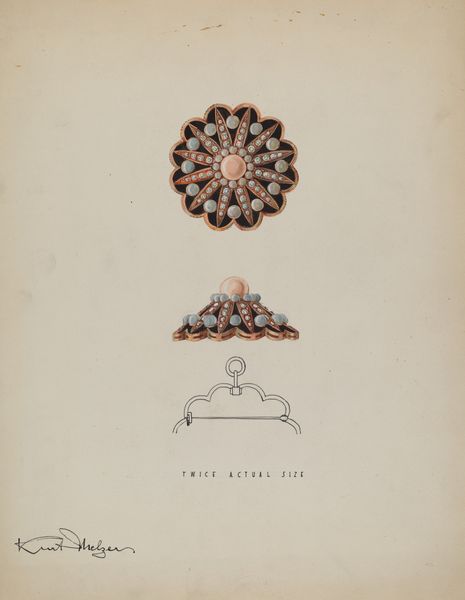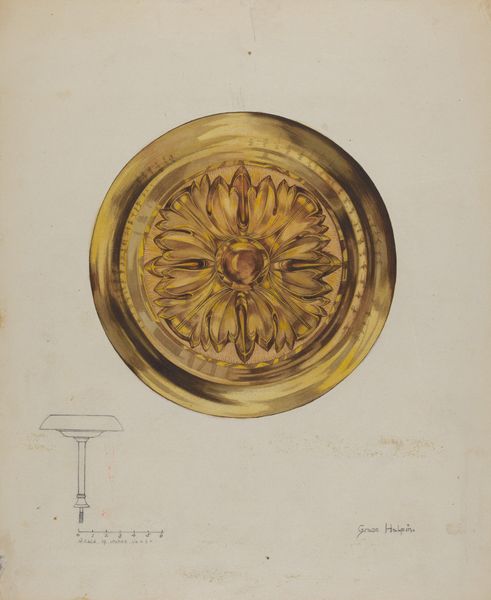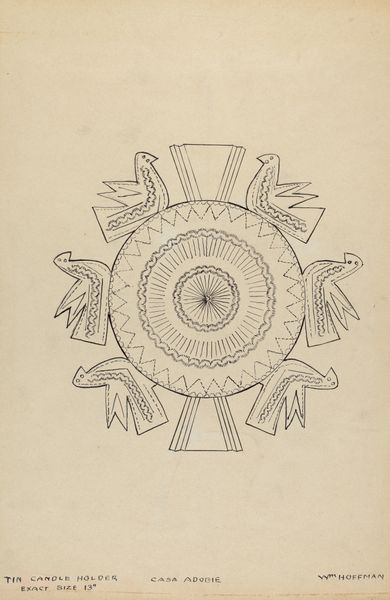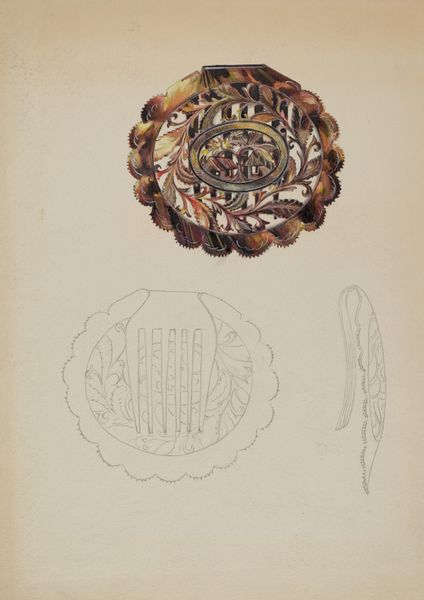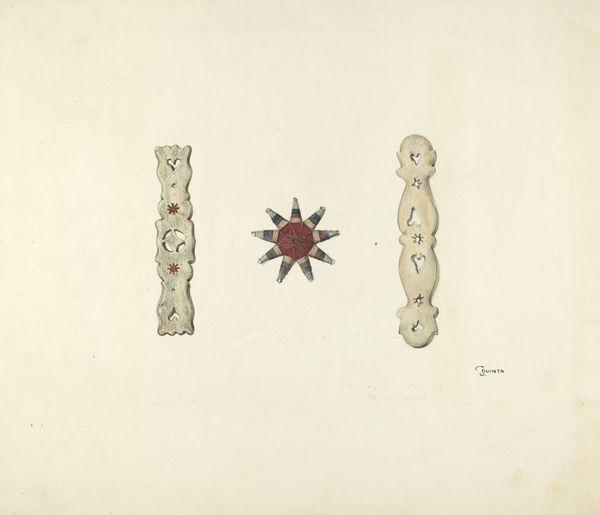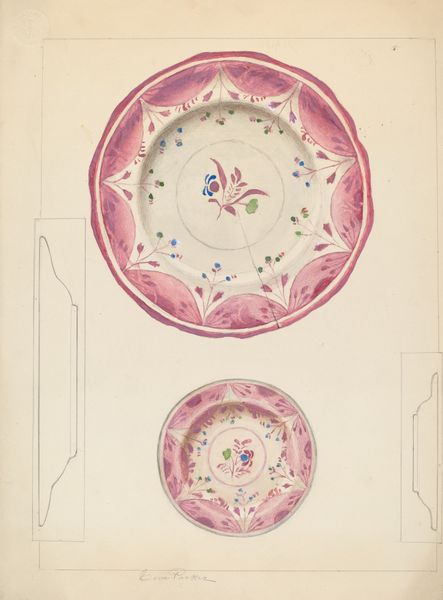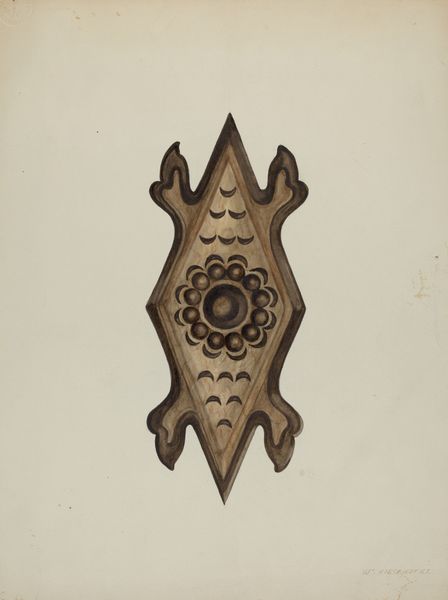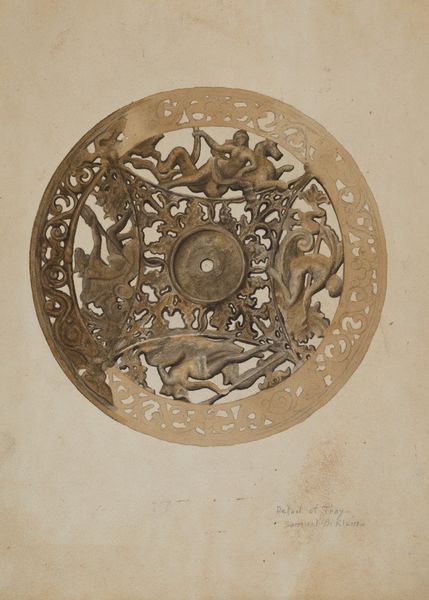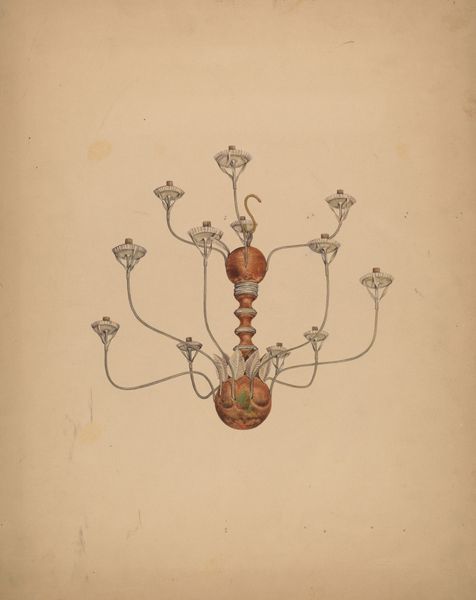
drawing, watercolor
#
drawing
#
water colours
#
watercolor
#
pencil drawing
#
geometric
#
decorative-art
Dimensions: overall: 29 x 23 cm (11 7/16 x 9 1/16 in.)
Copyright: National Gallery of Art: CC0 1.0
Curator: At first glance, there's something jewel-like about this piece. A complex, starburst form rendered in shimmering browns and golds, reminiscent of faceted glass. Editor: Indeed. This is "Curtain Tie Back," a watercolor and pencil drawing from around 1936 by Frank Fumagalli. It offers us an interesting window into the decorative arts of the period. The object itself, a functional piece designed to hold back curtains, takes center stage. Curator: And consider how Fumagalli elevates the everyday object. It’s a design study, isolating the object within the composition. I'm curious about the choices made with the materials—watercolor lends itself to the representation of light reflecting off of this form, especially where he builds tone, making the material facets and texture explicit. Editor: Right. This brings forth how during this time, museum collections started to focus on "useful" or "applied" art. This reflects a desire to democratize art by intertwining with ordinary lives—but, I must also add—as museums acquire these artworks, they consequently distance them from their original place. Curator: The geometric shapes, while ornamental, speak to mass production of similar types of items. This makes me want to know more about Fumagalli: Were there specific factories with which he may have been connected? Did his practice entail production and design in a modern, labor-oriented manner? Editor: Well, we could explore whether he had affiliations with design-oriented workshops or factories of the era. The very act of drawing it emphasizes its intended marketability as a consumer product. You see the rise of "styling," where even practical items like curtain tie-backs received artistic embellishments intended to drive sales. Curator: Thinking more about its social context, I agree, but in turn I'm also pondering labor itself—the physical demands to develop and make the artifact—and it makes me reflect on the cultural role and status of manual work during Fumagalli's time. It looks simultaneously delicate, almost gem-like, but clearly utilitarian. Editor: I see the beauty in it as well. In the end, what's so striking about Fumagalli's image is how the humble curtain tie-back is reborn on paper—removed from one world and reimagined. Curator: Absolutely, which allows us to examine Fumagalli’s choice of media, and the original contexts surrounding the social aspects of production in decorative arts in that era. Editor: And ultimately the role institutions play in making sure we don't take something like a tie back, so, well, tied to socio-economic context, for granted!
Comments
No comments
Be the first to comment and join the conversation on the ultimate creative platform.
